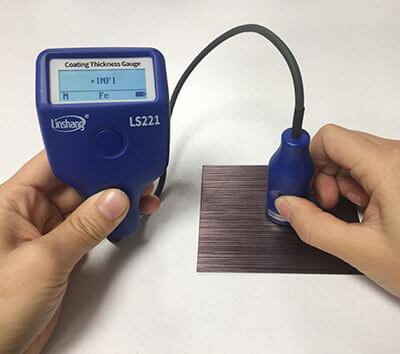What are the Non-metallic Protective Layers of Hardware?
1. Non-metallic protective layer process one: surface oxidation treatment
The surface of steel and aluminum hardware is easily oxidized in air. The former will generate a layer of rust with a loose structure. This layer of rust is not only ugly, but air will continue to load with the underlying base steel through this layer of rust until the entire steel plate becomes rust. A slightly off-white oxide film forms on the aluminum surface. Although the oxide film on the surface of the aluminum material is relatively dense, it can basically prevent the further loading of the aluminum substrate below. But its original silver-white gloss has been severely damaged. In order to prevent the above two phenomena from occurring, in addition to plating the protective decorative layer, an artificial oxide film can also be artificially manufactured on the surface of the newly made hardware.
The oxide film on the surface of steel hardware is generally made in lye. After the oxidation treatment, a dense layer of blue and black Fe20 oxide film (up to what is commonly referred to as bake blue) is formed on the surface. The surface of the aluminum hardware produces a uniform texture of oxide film. The artificial oxide film on the surface of steel and aluminum hardware is not only beautiful, flat and dense, but also has a much higher bonding strength with the substrate, which is difficult to remove. This oxide film can also prevent the metal below it from further corroding with air or other harmful gases. Because the oxide film on the surface of steel and aluminum hardware has lost its original metallic properties and becomes non-metal, they are also called non-metal protective decorative layers.
2. Non-metallic protective layer process 2: surface spraying
The non-metal protective decorative coating sprayed on the surface of metal hardware is mainly plastic and paint. The color of plastic and paint can be said to be everything, which is usually beyond the reach of metallic decorative layers. However, the main disadvantages of plastic and paint layers are their poor ability to resist oxidation and ultraviolet rays. They will gradually age and become brittle over time, losing their original bright color and starting to darken and crack and fall off. In addition, the bonding strength with metal is also not as high as that of metal plating, and it is easy to wear away. Therefore, it is not suitable as a protective decorative coating for moving parts. In order to improve the performance of paint on metal surfaces, amino paint (baking paint) is mostly used for the paint layer of hardware. For some special performance requirements, such as oil-proof, insulation, fluorescent, etc., these special paints can also be sprayed. For spray-painted plastic and paint protective decorative hardware, it is mostly used for furniture below mid-range.
3. Detection of the protective coating thickness on the metal hardware surface
Hardware coating thickness is one of the important signs to measure the quality of hardware coating. It plays an important role in product quality, process control and cost control. The coating thickness greatly affects the reliability and value of the product. Through the inspection of the coating thickness, in addition to assessing whether the workpiece with tolerance indicators or repair size requirements is reasonable, it can also directly or indirectly evaluate the coating's corrosion resistance, wear resistance and other properties. Therefore, it is widely used in coating quality inspection and process research. In order not to damage the surface structure of the coating and establish a uniform standard, it is necessary to standardize the detection of the coating thickness. According to the relevant standards, a coating thickness gauge is used for coating thickness measurement.
It is recommended to use Linshang coating thickness gauge to measure the coating thickness of hardware. Each coating thickness gauge of Linshang Technology adopts the thickness measurement principle of magnetic method and eddy current method. There are integrated design and split design. Large range coating thickness gauge for fire and corrosion resistant coatings. Users can choose according to their needs.
- High precision coating thickness gauge for used car
- Automotive paint protection films coating thickness gauge
- Plating Thickness Measuring Instrument for Detecting Anti-corrosion Coating
- Linshang LS220, LS191, LS160A– Necessary for Car Cover Inspection
- Coating Thickness Gauge for Second Hand Vehicle
- Zero Adjustment Step of Coating Thickness Gauge
